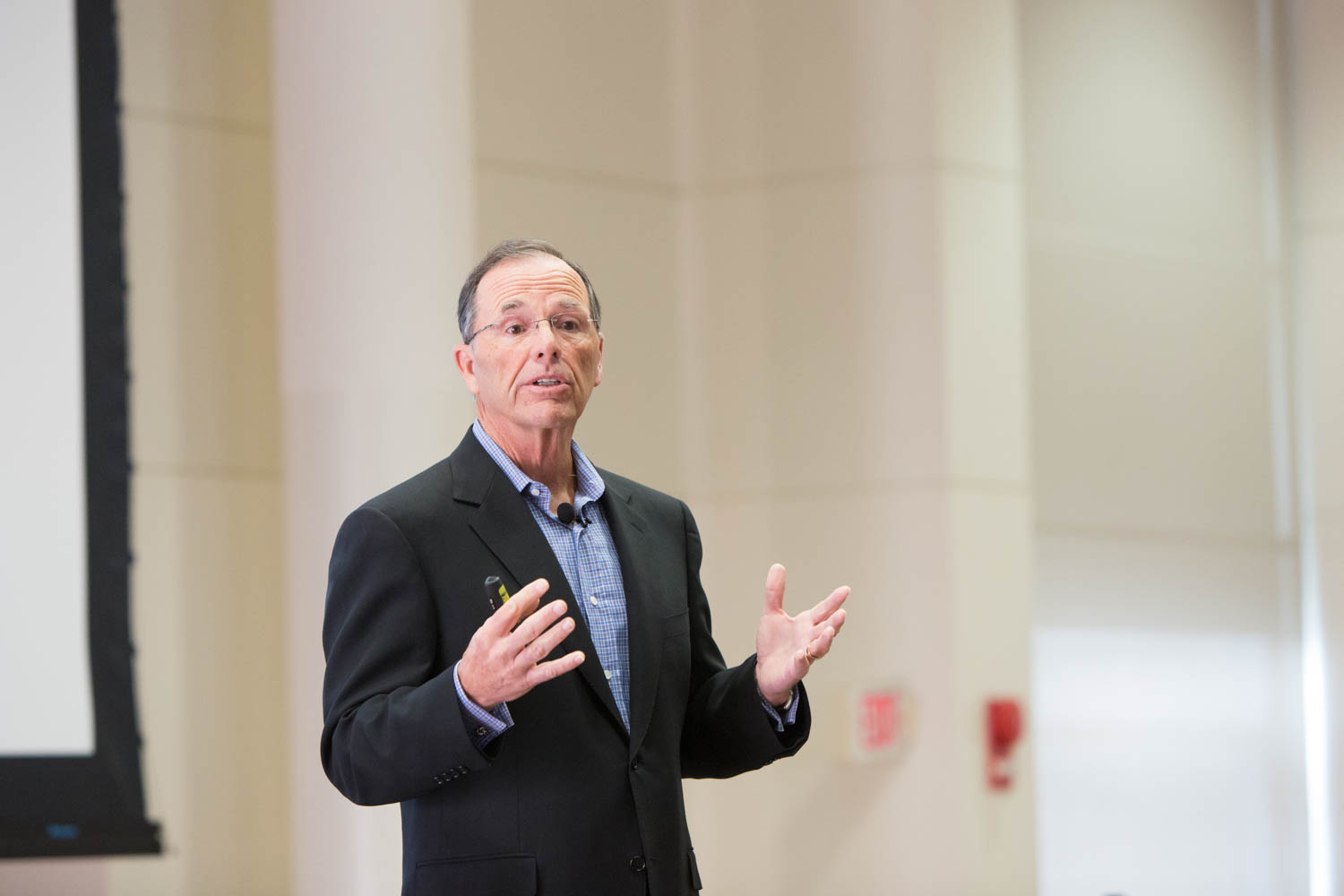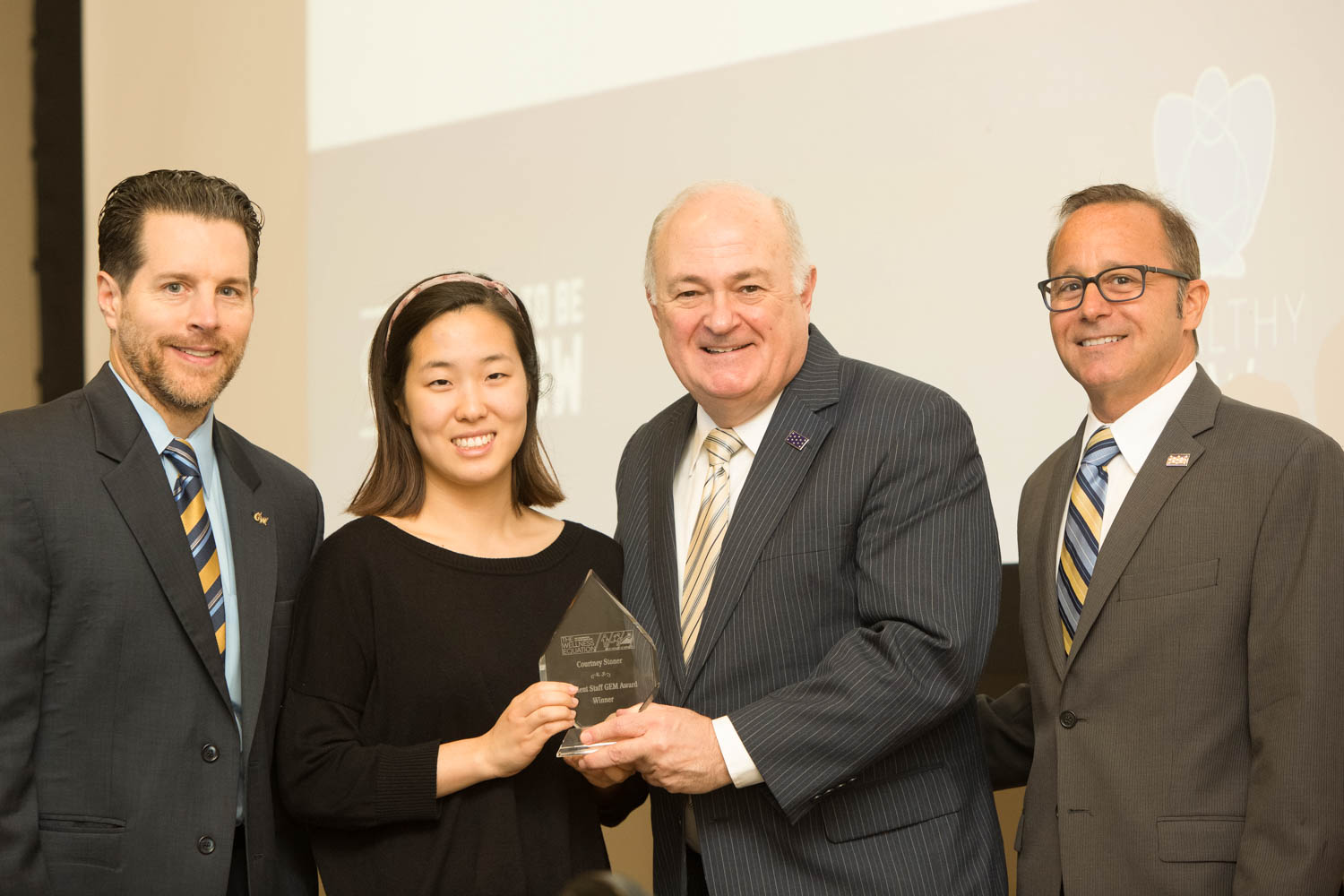By James Irwin
Speaking Thursday at the George Washington University, Burd Health CEO Steve Burd called rising health care costs a problem that could bankrupt the United States, while also outlining methods to curtail those costs and promote wellness in the workplace.
In a presentation and discussion with Lynn Goldman, the Michael and Lori Milken Dean of Public Health at the Milken Institute School of Public Health, Mr. Burd, the former chair and CEO of Safeway, Inc., highlighted sedentary lifestyles and poor nutritional habits as root causes of many health problems in the United States.
Personal behavior, and specifically four chronic conditions—cardiovascular disease, cancer, diabetes and obesity—make up 74 percent of health care costs in the United States, he said.
“If the growth rate of health care costs were to continue into the future, health care in the year 2050 could be 50 percent of the country’s GDP, which is hard to imagine," he said.
The session with Mr. Burd and Dr. Goldman, a world-renowned epidemiologist, pediatrician and former Environmental Protection Agency regulator, served as the keynote event for the university’s annual Celebration of Excellence professional development conference and awards. George Washington President Steven Knapp and Vice President for Human Resources Sabrina Ellis provided welcoming remarks prior to Mr. Burd’s speech, which focused on wellness and fitness, and how they affect the personal and financial well being of employees.
A different kind of market
There are multiple reasons for the nationwide rise in health care costs, Mr. Burd said. The most prominent: Health care does not function like a normal marketplace.
“We can compare costs on just about anything you can think of, but not in health care,” he said. “Imagine if supermarkets operated this way. You walk into the Georgetown Safeway, and there are no prices on the shelves. You put items in your basket and check out with a plastic card. A month later, you get a bill. And it says you purchased $3,500 worth of food, but the store has a special relationship with GW, and GW gets those goods for $800. You have exceeded your deductible, so you owe $160.
“That’s called rack pricing. It’s basically useless, and it permeates the delivery system. It hides real prices from people.”
It also significantly modifies consumer behavior, Mr. Burd argued. In the same example, a person who has met their out-of-pocket maximum could start “buying” groceries for free. Supermarkets would respond by raising prices on goods.
“I would take high-velocity items like milk, which usually cost $3.80 a gallon, and sell it for $32 dollars a gallon,” Mr. Burd said. “You can imagine how distorted food prices and purchasing and behavior would be. That’s kind of what we have in health care.”
Lowering pharmacy costs
Mr. Burd and Dr. Goldman touched on several topics, including skyrocketing pharmaceutical prices in the United States, one of the largest drivers of health care costs.
“We’re all aware of the squeeze that’s occurring in health care,” Dr. Goldman said. “We see premiums are going up, our out-of-pocket costs are going up. And certainly the price of prescription drugs is going up.”
Mr. Burd has a solution to rising pharmacy costs.
“In defense contracting in the United States, Boeing is not allowed to sell defense equipment to any other nation at a lower cost than they sell to the United States,” he said. “In health care, France, Great Britain, Canada—nations with nationalized health care bills—buy as a block and get a better deal than us. So you basically say: Pfizer, Merck, you can’t sell at a price higher in the U.S. than you sell somewhere else.”
Rewarding healthy and fit employees
At Safeway, Mr. Burd instituted biometric screenings for employees, rewarding people for good results and issuing refunds on higher premiums for employees who passed national health and wellness standards.
The practice lowered the health care costs of the company. But it took a company-wide effort to make it possible, Mr. Burd said.
“We needed to build an ecosystem,” he said. “We can’t be talking about health and wellness and then serve unhealthy snacks in the break room. We stopped subsidizing the unhealthy meals. You want to build a culture of health and fitness.”
The model, he said, can be applied to the country.
“If we solve the problem here, then we can solve it for the nation,” he said. “Everybody wins.”



